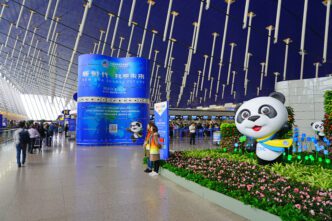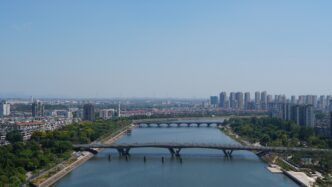Executive Summary
The Story So Far
Why This Matters
Who Thinks What?
An opinion piece published on November 8, 2025, by Donald Low and Thomas Lam Chun-kai argues that Thailand’s apparent economic success from the “China plus one” strategy is masking significant structural weaknesses. While the country has seen a surge in foreign direct investment (FDI) and boasts low unemployment, the authors contend that these positive indicators obscure underlying issues like stagnant wages, an ageing workforce, and a reliance on low-value assembly. This situation, they suggest, risks entrenching Thailand further into a middle-income trap rather than facilitating its escape.
Thailand’s Investment Appeal and Underlying Challenges
Thailand has been widely perceived as a prime beneficiary of the “China plus one” strategy, attracting advanced manufacturing firms seeking to diversify their supply chains away from China. Its established industrial infrastructure, a domestic market of nearly 100 million people, and integration into global automotive and electronics supply chains make it an attractive destination. The Thai Board of Investment reported a decade-high in investment applications last year, particularly in digital infrastructure, advanced electronics, and the electric vehicle (EV) value chain, an upturn partly driven by government incentives.
Despite these promising FDI figures and a low unemployment rate hovering around 1 percent, the authors highlight a contrasting reality in manufacturing wages. According to the Bank of Thailand, nominal manufacturing wages peaked in mid-2023 at 14,613 baht (approximately HK$3,200) per month, only to stagnate or slightly decline to 14,530 baht by the third quarter of 2024. This trend stands in stark contrast to neighboring Malaysia, where increased “China plus one” investment has reportedly driven considerable wage growth for skilled workers.
Structural Headwinds and Industry Disruption
The opinion piece identifies several enduring structural challenges that impede Thailand’s ability to upgrade its economy through foreign investment. These include a rapidly ageing population, persistent skills mismatches—such as a lack of digital fluency—limited bargaining power for workers, and a significant low-productivity informal sector, which employs more than half of the country’s workforce. The authors suggest that the very nature of some foreign investments may exacerbate these weaknesses rather than alleviate them.
Multinational corporations frequently retain high-value functions like research and development or complex engineering in their established bases, relegating countries like Thailand to lower-value assembly roles. This cost-optimized model provides little incentive for firms to invest in long-term workforce upskilling beyond immediate needs. Consequently, advanced components and technologies are often imported, confining Thai workers to the less lucrative final stages of production, which suppresses wages and stunts the development of a domestic high-tech ecosystem.
The automotive sector illustrates the ambiguous impact of the “China plus one” strategy. While Thailand marked a milestone with its first export of 660 EVs in April, this achievement has been overshadowed by a precipitous decline in its traditional vehicle industry. The Federation of Thai Industries reported that vehicle production last year declined by nearly 20 percent to a four-year low, with domestic sales plunging over 26 percent to their lowest point in 15 years, a trend that continued into 2025. EV manufacturing, with its lower mechanical complexity, demands less direct labor input per vehicle, threatening jobs and the extensive network of suppliers tied to internal combustion technology.
Pathways for Reform
To fully leverage “China plus one” investment, the authors argue that Thailand urgently needs to address several structural weaknesses. Its logistics infrastructure, for example, ranks only 34th globally according to the World Bank’s 2023 Logistics Performance Index, trailing key competitors like Malaysia. This undermines its appeal to multinational firms that prioritize reliability in high-value industries.
Furthermore, the skills gap, exacerbated by an ageing demographic, restricts the type of investments Thailand can attract. Decades of underinvestment in education, vocational training, and research and development have left large segments of the workforce ill-prepared for higher-value roles. This persistent deficit risks locking Thailand into assembly-line functions, stifling productivity improvements and value-chain advancement.
Key Takeaways
Thailand’s experience with the “China plus one” strategy serves as a cautionary tale, according to Donald Low and Thomas Lam Chun-kai. Promising FDI statistics and EV success stories can obscure wage stagnation, industrial upheaval, and subdued growth prospects. The International Monetary Fund (IMF) and World Bank have already revised Thailand’s 2025 growth forecasts downwards to a modest 1.8–2 percent, suggesting the country risks falling deeper into the middle-income trap. The broader lesson for developing nations is that attracting foreign investment, while necessary, is not sufficient for sustained economic development without comprehensive structural reforms, including improved education, aligned vocational training, domestic R&D investment, modernizing logistics, and creating pathways from informal to formal employment.







